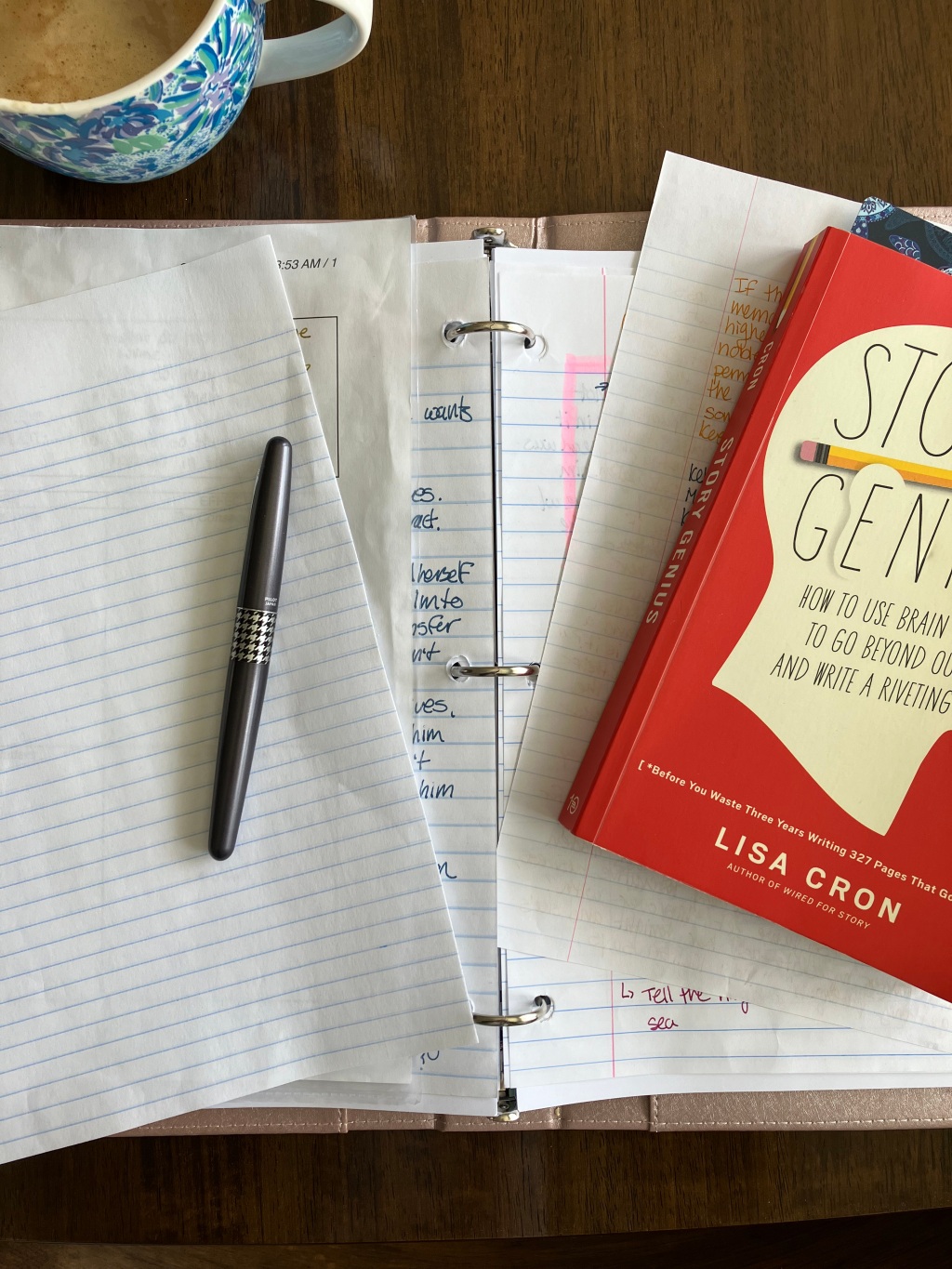If you’ve seen the previous blog posts in my “Write with Me” series, you know that I have been drafting a brand new WIP. I’m currently brainstorming scenes for my book’s middle (sometimes lovingly referred to as the muddle). It can be daunting to get through, to find scenes to fill all those note cards. Breaking the book down into smaller segments helps, but sometimes I’m still left wondering what direction to go in. Too many options can be paralyzing!
As a planner, sometimes it’s hard to brainstorm without limiting myself. I want to choose the “right” next scene on my first try. Sometimes, I’m lucky. Mostly, I’m not. Sometimes I get close. Sometimes, I’m way off. Sometimes, I need to be way off, to follow a plot path to the end to discover it doesn’t work. I’ve written myself into more than one corner.
Here are five tricks I use to fool my planner brain into storming more effectively:
Change the Medium: Sometimes, brainstorming in my Scrivener doc feels too permanent, like being in the document—even if it’s a section labeled “Ideas” or “Notes” or “Brainstorm”—means it needs to be in the story.
This is similar to the advice you hear to change your font, which I find works when I get to the writing stage if I’m being too much of a perfectionist, but not so much at the brainstorming stage. For this WIP, I’ve been brainstorming with pen and paper. It allows me to explore an idea in some depth if I want to see where it goes, and pull the page out if it’s not the direction I want to go in. Then I literally have a blank page to try again.
Use a White Board: Similar to the suggestion above, using a white board (or in my case a blank paper tucked into a page protector in my binder that I can wipe clean) lets me brainstorm without fear of permanence. It’s just an idea. I don’t have to put it in, the story doesn’t need to go in this direction. If I do decide to use it, I write it on my scene card.
Pose a Question: It’s slightly ridiculous how well this works for my brain. If I’m coming up with a list of ideas I’m not sure about, I just pop a question mark on the end of the idea. It’s not completely ruled out, but I’m not committing to anything. It helps me not get stuck on that one idea so I can keep coming up with more possible solutions.
Try the Opposite: I find this one especially helpful if I’ve written myself into a corner. Instead of asking myself how my characters escape a certain situation for example, I ask myself, what if they don’t? What does it look like if they don’t escape? It might lead to a better path for my story or it might show me that my story can’t go that way—that the characters do need to escape the situation, and now I need to figure out how.
What Would (Character) Do? Sometimes when I’m having trouble finding the next scene, it helps to remind myself what all the characters in that scene would do in that situation. This is why I never liked the brainstorming advice to “write down every idea, even if it sounds weird or crazy.” I find it much more helpful to ask what each character would do in the proposed situation. It might help me choose a different perspective to show the scene from, or know that it’s not working because what I’m trying to make them do is out of character. If I find I don’t know what my character would do, I can always go back to my workbook to figure it out.
I hope these tips help your brainstorming move forward too!


Leave a comment